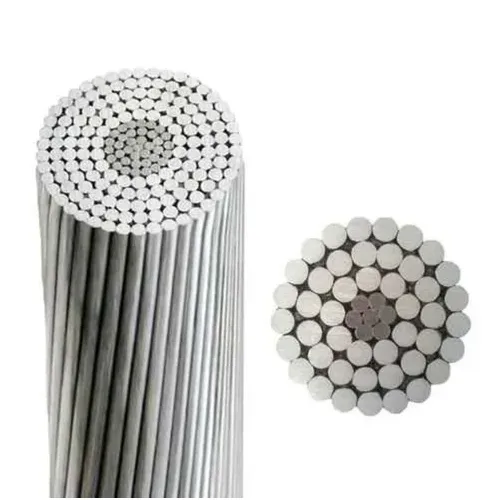Aerial Cables: Connecting the World Above
Time: 2025-05-20 15:00:39
Source: Henan Province Jianyun Cable Co., Ltd.
Aerial cables, also known as overhead cables, are essential components of modern communication and power distribution networks. These cables are suspended above the ground, typically supported by utility poles, towers, or other structures. They are widely used for transmitting electricity, telecommunications signals, and data across vast distances, offering a cost-effective and efficient solution for connecting urban and rural areas.

Types of Aerial Cables
Aerial cables can be categorized based on their function and construction. The primary types include:
-
Power Cables: These cables transmit electrical power and are commonly used in overhead power lines. They are designed to withstand high voltages and environmental stresses, such as wind, rain, and temperature fluctuations.
-
Fiber Optic Cables: Used for high-speed data transmission, aerial fiber optic cables are critical for internet, telephone, and television services. They offer high bandwidth and low signal loss over long distances.
-
Coaxial Cables: These are used for cable television and internet services, providing reliable signal transmission with shielding to reduce interference.
-
Aerial Bundled Cables (ABCs): These are insulated power cables bundled together to reduce the risk of electrical faults and improve safety. They are commonly used in low-voltage distribution networks.
Construction and Design
Aerial cables are engineered to endure harsh environmental conditions. Key design features include:
-
Conductors: Made of materials like copper or aluminum for power cables, or glass fibers for fiber optic cables, conductors are the core component for signal or power transmission.
-
Insulation: Insulating materials protect the conductors from environmental factors and prevent unwanted electrical contact. Common insulation materials include polyethylene and cross-linked polyethylene.
-
Support Structures: Aerial cables are often supported by steel or composite messenger wires to provide tensile strength and stability during installation and operation.
-
Protective Sheathing: Outer layers shield the cables from UV radiation, moisture, and physical damage, ensuring long-term durability.
Installation and Maintenance
Installing aerial cables requires careful planning and adherence to safety standards. The process typically involves:
-
Site Survey: Assessing the terrain, weather conditions, and structural requirements to determine the optimal cable path.
-
Pole Installation: Erecting utility poles or utilizing existing structures to support the cables.
-
Cable Stringing: Using specialized equipment to hoist and secure cables, ensuring proper tension and alignment.
-
Splicing and Termination: Connecting cable segments and attaching them to terminal equipment for integration into the network.
Maintenance of aerial cables involves regular inspections to identify wear, damage, or vegetation interference. Advanced technologies, such as drones and robotic systems, are increasingly used to monitor and maintain overhead lines, improving efficiency and safety.
Advantages of Aerial Cables
Aerial cables offer several benefits compared to underground cables:
-
Cost-Effectiveness: Installation and maintenance costs are generally lower than for underground systems, as no extensive excavation is required.
-
Ease of Access: Overhead cables are easier to inspect, repair, and upgrade, reducing downtime in case of faults.
-
Flexibility: Aerial systems can be deployed in diverse terrains, including areas where underground installation is impractical.
Challenges and Considerations
Despite their advantages, aerial cables face certain challenges:
-
Environmental Exposure: Exposure to weather conditions, such as storms or extreme temperatures, can lead to wear and potential outages.
-
Aesthetic Concerns: Overhead cables may be considered visually intrusive in urban or scenic areas.
-
Safety Risks: Uninsulated power cables pose risks of electrical hazards, particularly during storms or if lines are damaged.
To mitigate these issues, modern aerial cable designs incorporate advanced materials and insulation techniques, and some regions opt for aerial bundled cables to enhance safety and reliability.
Applications and Future Trends
Aerial cables are integral to various applications, including rural electrification, broadband internet expansion, and smart grid development. With the growing demand for high-speed connectivity and renewable energy integration, aerial fiber optic cables are becoming increasingly vital. Innovations such as robotic deployment systems and self-supporting cables are enhancing the efficiency and sustainability of aerial installations.
In the future, advancements in materials science and automation are expected to further improve the performance and lifespan of aerial cables. Additionally, hybrid systems combining aerial and underground infrastructure may offer balanced solutions for connectivity and power distribution.
Conclusion
Aerial cables play a critical role in modern infrastructure, enabling reliable power and communication networks across the globe. Their versatility, cost-effectiveness, and adaptability make them a preferred choice for many applications, despite challenges posed by environmental and aesthetic factors. As technology evolves, aerial cables will continue to connect communities, supporting the growing demands of a digital and electrified world.
